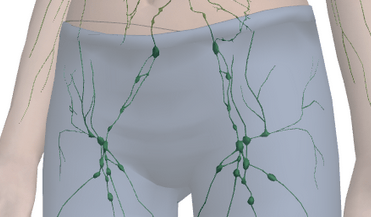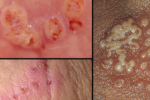Содержание
Digital Revolution in Dentistry
AI-Powered Precision and Diagnostics
Artificial intelligence has emerged as the cornerstone of modern dental practice, offering capabilities that extend far beyond simple automation. Machine learning algorithms now analyze radiographs with remarkable accuracy, detecting early-stage cavities, periodontal disease, and even oral cancers that might escape human observation.
These systems process thousands of data points instantaneously, identifying subtle patterns and anomalies that lead to earlier interventions and better outcomes.The integration of AI with intraoral scanning technology has created unprecedented precision in treatment planning. Digital impressions captured through advanced scanners eliminate the discomfort of traditional molds while providing highly detailed 3D models.
These digital workflows require reliable compressed air systems for dental facilities, which power the pneumatic instruments essential for modern procedures. The right equipment ensures consistent performance of high-speed handpieces, scalers, and air-water syringes that depend on clean, dry air delivery.
3D Printing and Same-Day Solutions
Three-dimensional printing technology has revolutionized restorative dentistry by enabling same-day crowns, bridges, and even complex prosthetics.
This advancement dramatically reduces treatment timelines from weeks to hours, allowing patients to receive permanent restorations in single appointments. The precision of 3D-printed dental appliances surpasses traditional manufacturing methods, ensuring better fit, function, and aesthetics.Smart monitoring systems integrated with dental equipment provide real-time feedback on air quality, pressure levels, and equipment performance.
These IoT-enabled technologies predict maintenance needs before failures occur, minimizing downtime and ensuring continuous high-quality care delivery. For busy practices, this predictive capability translates to fewer disruptions and more consistent patient experiences.
Future of Dental Practice Management
Professional Development in the Digital Age
The rapid pace of technological advancement demands continuous learning and adaptation from dental professionals. Staying current with digital dentistry trends requires access to comprehensive educational resources and industry insights that bridge the gap between innovation and practical application. Modern practitioners must balance clinical expertise with technological proficiency, understanding not just how to use new tools but when and why they provide superior outcomes.Teledentistry has expanded beyond emergency consultations to become an integral part of ongoing patient care.
Virtual follow-ups, remote monitoring, and digital treatment planning enable practitioners to maintain continuous engagement with patients while optimizing in-person appointment scheduling. This hybrid approach improves accessibility for patients in underserved areas while allowing practices to manage resources more efficiently.
Data-Driven Decision Making
The integration of practice management software with clinical systems creates comprehensive patient profiles that inform treatment decisions. Predictive analytics identify patients at higher risk for specific conditions, enabling proactive interventions that prevent more serious problems.
This data-driven approach transforms dental care from reactive treatment to preventive wellness, aligning with broader healthcare trends toward personalized medicine.Professional networks and continuing education platforms play crucial roles in helping practitioners navigate this digital transformation. Access to peer insights, case studies, and expert guidance ensures that technology adoption translates into improved patient outcomes rather than mere technological novelty.
Patient Experience & Modern Dental Environments
Comfort-Centered Design Philosophy
The physical environment of dental practices has evolved dramatically, moving away from clinical sterility toward spaces that promote healing and reduce anxiety.
This transformation extends beyond aesthetics to encompass ergonomic furniture solutions for healthcare facilities that support both patient comfort and practitioner efficiency. Modern dental chairs with memory functions, adjustable positioning, and integrated technology create personalized treatment experiences while reducing physical strain during lengthy procedures.Biophilic design elements, including natural materials, greenery, and abundant natural light, have proven effective in reducing patient anxiety.
These nature-inspired environments create calming atmospheres that make dental visits less intimidating, particularly for patients with dental phobia. The psychological impact of thoughtfully designed spaces directly influences treatment acceptance and patient satisfaction scores.
Recovery and Wellness Integration
Dedicated recovery spaces separate from main waiting areas provide quiet, comfortable environments for post-procedure recuperation.
These specialized zones feature adjustable seating, controlled lighting, and privacy features that support patient dignity while enabling staff monitoring. The integration of smart furniture with monitoring capabilities allows for seamless tracking of patient vital signs and comfort levels during recovery periods.Infection control considerations have driven innovations in furniture materials and finishes, with antimicrobial surfaces and seamless designs becoming standard.
These features support both patient safety and regulatory compliance while simplifying maintenance protocols. The result is environments that feel welcoming yet maintain the highest standards of clinical hygiene.
Conclusion
Digital dentistry represents more than technological advancement—it embodies a fundamental shift in how oral healthcare is conceived, delivered, and experienced. The convergence of AI diagnostics, 3D printing, smart equipment, and patient-centered design creates unprecedented opportunities for improving clinical outcomes while enhancing patient satisfaction. Success in this evolving landscape requires thoughtful integration of technology with human expertise, ensuring that innovations serve their ultimate purpose: delivering exceptional patient care. For dental professionals, embracing these changes means investing not just in equipment and technology but in continuous learning and adaptation. The practices that thrive will be those that balance technological sophistication with genuine patient connection, using digital tools to enhance rather than replace the human elements of dental care. As we move forward, the most successful practitioners will be those who view technology as an enabler of better relationships, outcomes, and experiences for everyone involved in the dental care journey.


























